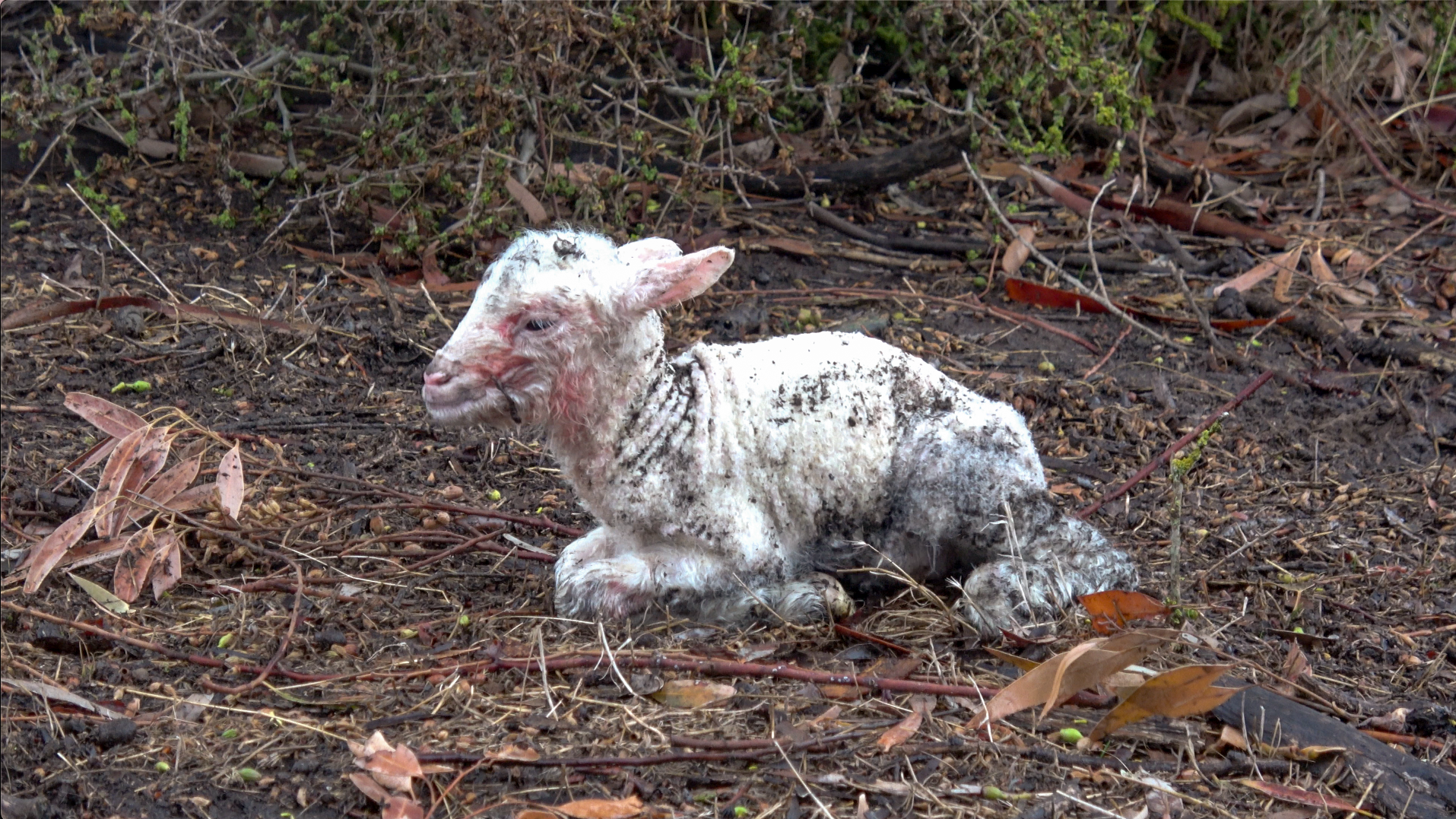
The lamb and wool industries let millions of lambs freeze to death.
Every year across Australia, approximately 15 million lambs die within 48 hours of birth and the industry doesn’t care.
Ewes are impregnated to give birth in winter.
The lamb and wool industries impregnate ewes so that they give birth in the winter months, a process known as ‘winter lambing’. Winter lambing is typically done to reduce costs, as it allows farmers to wean the lambs in spring when the paddocks are most fertile. This reduces the costs associated with buying supplementary feed. Market demands also drive winter lambing. When ewes give birth in winter, their lambs reach their slaughter weight in early summer, when the demand for lamb meat is highest.
The industry continues to promote winter lambing despite knowing ~15 million lambs die every year.
Lambs are very susceptible to cold stress, illness, and predation, and lambing in winter only increases the mortality rates.
Farmers are also selectively breeding sheep to make them give birth to more than one lamb. A 2019 study found that the mortality rate increases with twins and triplets. Twin and triplet foetuses are smaller than singleton lambs, making them more susceptible to the cold. It also creates a higher chance of starvation, malnutrition, and death due to a mismatched supply and demand for the mother’s milk. As a result, an estimated 1 in 4 lambs die from exposure and malnutrition within 48 hours of birth - that’s approximately 15 million lambs a year.
While the mother tries to protect her young from the cold, wind, and rain, often this is not enough, causing them to freeze, starve, or fall prey to predators.
The industry puts profits before the welfare of the ewes and lambs.
The lambs’ slow and painful deaths are heartlessly referred to as an “inevitable” part of lamb ‘production’, but this is untrue. The extensive suffering and high mortality rates only occur due to the industry prioritising profits over welfare.
Breeding twins and triplets is also dangerous for the mothers, who exhaust themselves during birth. The stress and pressure to birth more than one lamb can cause them to be 'downed', meaning they are unable to stand. They may also be left prolapsing and dying, leaving behind their lambs.
Majority of winter lambing deaths are due to poor farm management practices.
The number of lambs dying from exposure and malnutrition could be reduced with better farming practices. Ending the practice of winter lambing, will reduce lambs freezing to death. Providing shelter and high quality forage would reduce the wind and chill effects. Reducing the flock size and ending twin and triplet breeding would stop mis-mothering and abandonment.
The agriculture sector continues to vilify dingoes for ‘stock losses’, avoiding the true killer – winter lambing.
The lamb and wool industries claim that dingoes are detrimental to the industry, damaging their profits. In reality, predation is responsible for less than 10% of all lamb deaths. An additional study suggests that predation accounts for just 0.12%, because predators were predating on already compromised lambs – such as those who died or were sick from starvation, exposure, illness or mis-mothering.
The lamb and wool industries are two significant users of 1080 poison, traps, and guns to kill dingoes. In sheep farming areas, expenditure on lethal dingo control can account for over 75% of annual plant and animal control budgets (PDF), with most of this spent on 1080 baiting. 1080 poison causes an incredibly cruel and slow death to any animal who ingests it. It is also responsible for the death of countless non-target species. Learn more about the issues with 1080 poison here.
Dingoes killed in Queensland by a wool farmer.
ABC Ian Townsend
Help lambs and sheep by ending the demand.
Ending winter lambing won't end suffering. While banning winter lambing will reduce the suffering of millions of lambs, it will not stop the slaughter. All sheep in the meat and wool industry will eventually be killed for human consumption.
As a consumer, you have the power to help end the suffering of lambs and sheep. By choosing to leave animals off your plate, you are taking a stand against legalised animal suffering, helping create a kinder world for all.
Not sure where to start? Check out our favourite animal-friendly recipes and products here.
Here are some ways you can help the animals:
Rescue lambs, in the care of Lamb Care Australia


